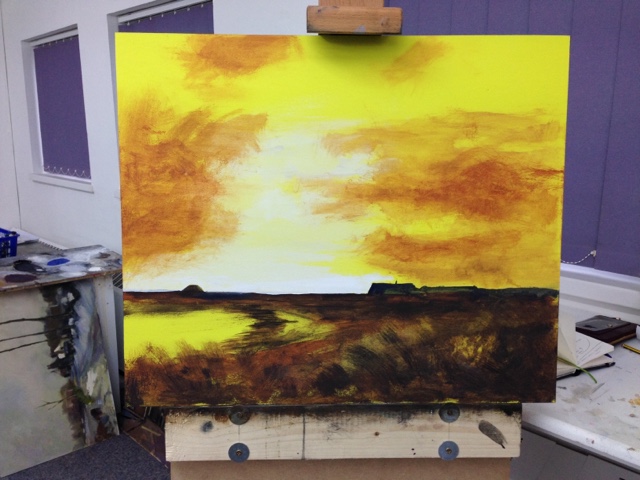The medium had many limitations as you could only paint with it area by small area . It was difficult to apply to large areas however fresco paintings were common.
Jan van Eyck Painted with tempera and oils , which gave a very different effect. Turner and Rembrant used raw pigments with oil base.
Martin described the reflective qualities of using a glaze, how the gesso is the reflective part of the painting. A transparent layer of coloured glaze becomes luminous because of what is beneath it.
A Grissille is a tonal black and white under painting that has colour by the addition of glaze .
Rembrandt added 'gesso force' extra white layers and optical mixes, primary grazes layered on top of each other to create secondary colours. The sequence makes a great difference. Many thin layers were added.
Stage one of today's studie painting .
A cadmium yellow light substrate was the starting point. Then earth coloured pigments were
layer on top using an E'bouche tempra technique using a special medium . Lots of raging off to make varied texture.
Second stage of painting
Noticed the forced white pigment tempera on the skyline.
Third stage glazing with transparent red and a Resin medium make shout glaze mix is not slide ( keep a really dry brush watch out no spirit anywhere near because it will take the paint off)






No comments:
Post a Comment